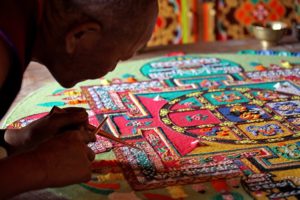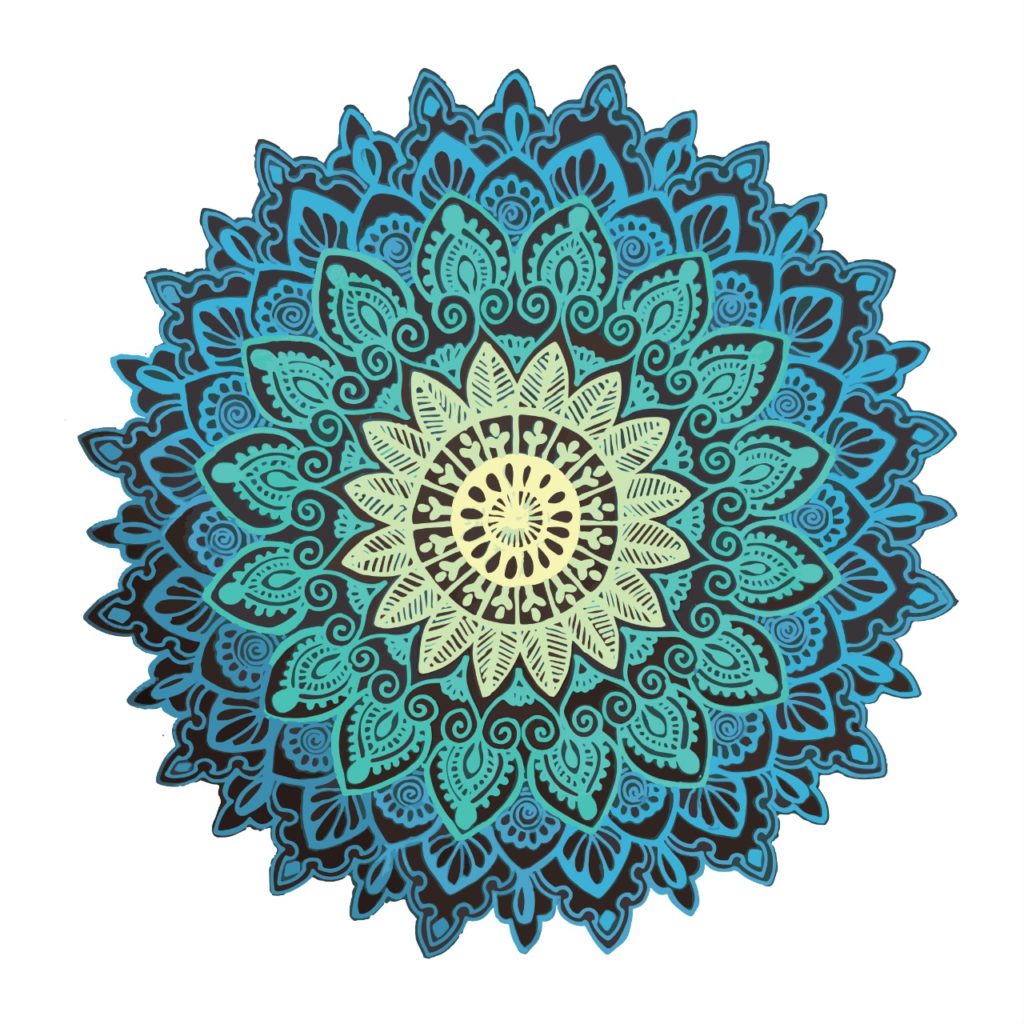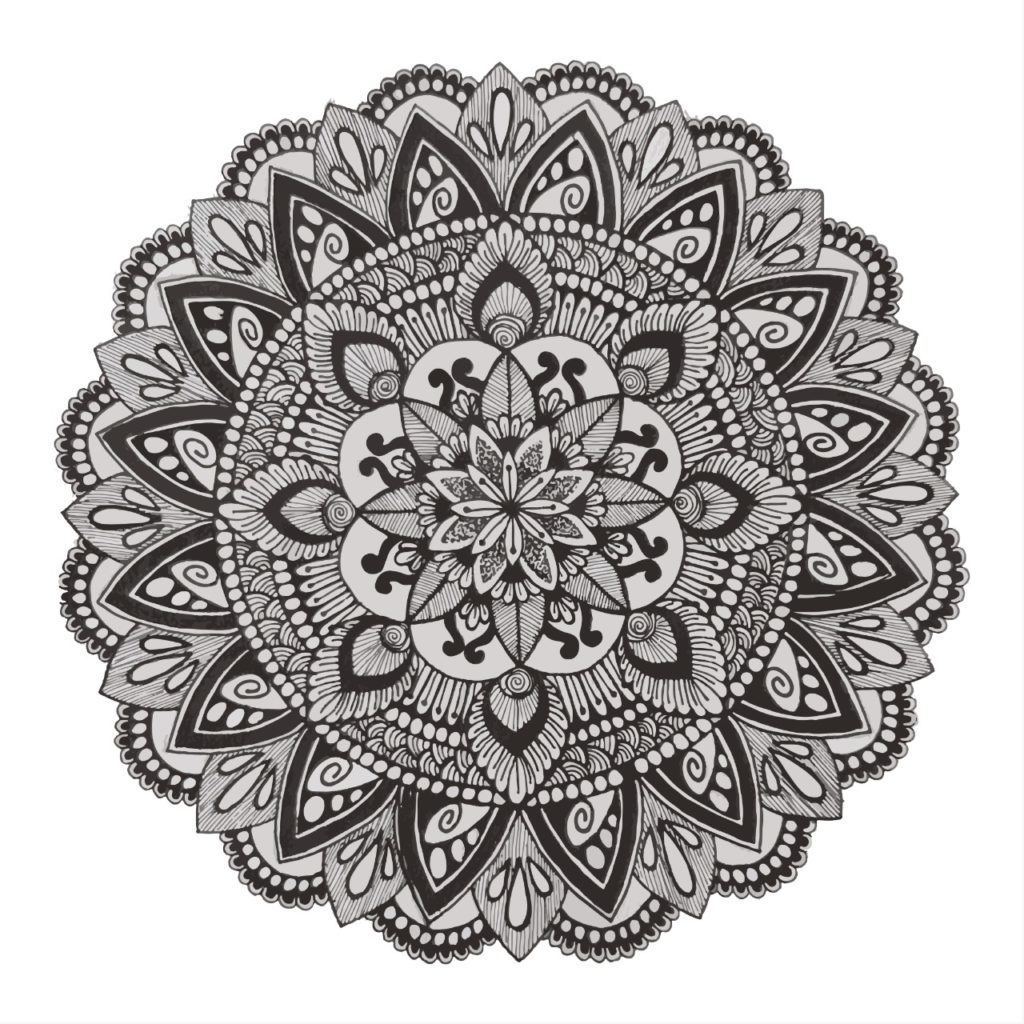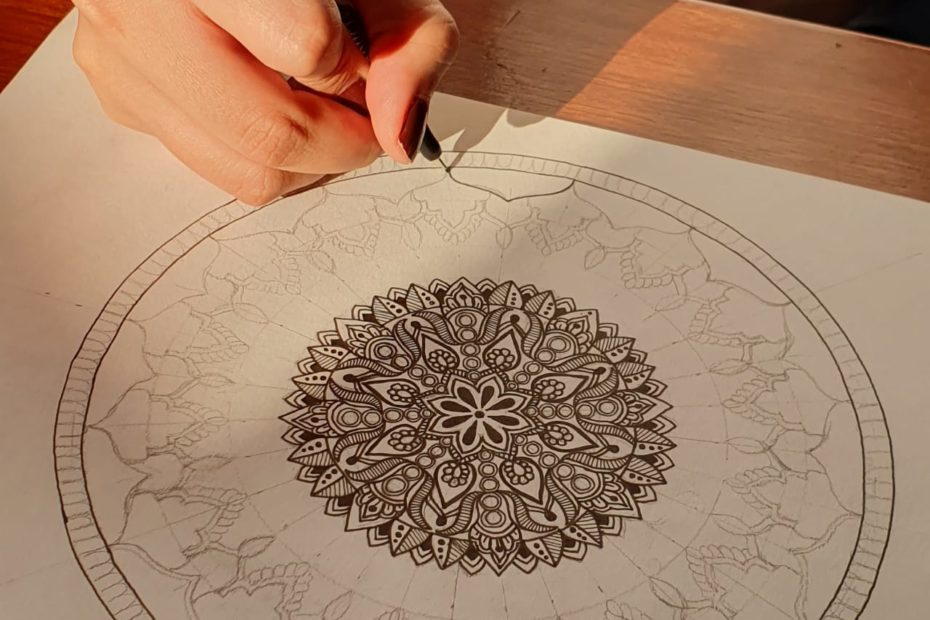If you’ve ever encountered Asian Art, you have probably come across or heard of a Mandala. A Mandala is a Sanskrit word which literally means a ‘Circle’. It is more than just a geometric configuration of symbols and patterns; it represents wholeness of the psychic ground, a cosmic diagram that reminds one of their relation to the infinite – a world within and beyond one’s mind and body.
A Mandala is a symbol that signifies inner transformation and represents the spiritual journey within an individual, thereby serving as a guide for several spiritual practices that take place in Asian traditions, for example – yoga and meditation. In Hindu and Buddhist cultures primarily, Mandalas act as a guide in the path to achieve enlightenment and liberation.


Conventionally, a Mandala is a circle enclosed in a square and is divided into sections that are organised around one central point. The center is a dot, suggestive of being free of dimensions. It is interpreted as the starting point or the beginning of contemplation, and is surrounded by lines and patterns that represent the environment and the universe.
A Mandala appears in all components of life – celestial bodies like the Sun, Earth and Moon, as fractals in nature; the ever repeating patterns observed throughout the natural universe, as man-made forms in science, architecture and so on. Once you start noticing these patterns, they start showing up everywhere, allowing you to draw connections and envision the everlasting interconnection between humans and nature.


Benefits of Drawing a Mandala
- It is a practice that brings positivity and a sense of well-being
- They help expand our self-awareness and restore balance
- They help to improve concentration and patience
- Helps you to become more mindful and relaxed
- Helps you become more creative and use your imagination
- Helps reduce stress and anxiety
Some Quick Tips
- If you are not comfortable drawing directly with a pen, start by drawing with a pencil. You can even use paints, sand colours, coloured/neon pens etc.
- You can draw digitally, or use traditional methods and draw on any surface – on paper, canvas, wood, walls, metal etc.
- Try to keep the mandala as symmetrical as possible. Use a compass, protractor, scale and other such items.
- If you don’t want to draw a Mandala, you can colour one too. It’s just as calming and enjoyable.
- Don’t worry about the mandala being perfect, just start drawing and experiment with different patterns.
- Practice, practice and practice. Find out what inspires you and draw. Eventually your drawings will get more detailed and precise. Just enjoy the process.

Pretty! This was a really wonderful post. Thank you for your provided information. Niki Nealon Hitchcock
My brother suggested I may like this website. He was once entirely right. This post truly made my day. You can not imagine just how much time I had spent for this information! Thank you! Orella Rafi Ignacia
Wonderful work! That is the kind of info that are supposed to be shared around the net. Jeanie Marmaduke Bamby
A lot of blog writers nowadays yet just a few have blog posts worth spending time on reviewing.
My website: порно изнасилование
Keep working ,splendid job!
My homepage local SEO